Where are 300,000 Illegal Alien Kids
Segment # 416
The claim that 300,000 illegal immigrant children are “missing” or unaccounted for in the U.S. has circulated widely, especially in political discourse and media, but it is important to break this down carefully:
1. Unaccompanied Minors Released to Sponsors
When unaccompanied children (UACs) cross the U.S. border, they are typically taken into custody by U.S. Customs and Border Protection (CBP) and then transferred to the Department of Health and Human Services (HHS) Office of Refugee Resettlement (ORR). ORR places these children with vetted sponsors—often relatives—within the U.S.
Between 2014 and 2023, over 600,000 unaccompanied children were released to sponsors in the U.S.
The 300,000+ figure likely refers to the total number of such minors released during that time.
2. Not “Missing” — But Poor Follow-Up
HHS does not track children after they are released to sponsors long-term.
In 2021 and 2022, media investigations (including by The New York Times) revealed that tens of thousands of children could not be reached in follow-up phone calls, leading to concerns they may be working illegally or in unsafe conditions.
In some reports, up to 85,000 children were not reachable during safety check-ins.
3. Who Knows Where They Are?
The U.S. government (CBP, HHS, ICE) has records of their initial processing and release locations.
However, once released to sponsors, ORR does not monitor them long-term unless there are red flags.
NGOs, schools, and local services may have indirect information based on enrollment or services used, but no central database exists to track them all after release.
4. Concerns Raised
This situation has raised concerns about:
Child labor exploitation
Trafficking
Lack of accountability in vetting sponsors and post-release monitoring
In Summary:
The U.S. government processed and placed over 300,000 migrant children with sponsors, but does not actively track most of them after release. This doesn't mean they are all “missing” in a literal sense, but it does indicate a gap in oversight and accountability, which has raised serious safety and human rights concerns.
Sponsors
What’s Going Wrong:
Senate Investigations: A 2016 Senate report revealed that the Department of Health and Human Services placed UACs with sponsors who were not properly vetted, including sponsors who used P.O. boxes or had no verified physical address.
Multiple Children per Sponsor: Some sponsors were found to have taken custody of multiple children, sometimes without clear evidence of a familial relationship. This raised red flags about possible labor trafficking or financial exploitation.
Ohio Case: In 2014, HHS placed children with sponsors who forced them to work on egg farms in Marion, Ohio, under threats and coercion. The traffickers had sponsored multiple children, and no proper background checks flagged the abuse.
Weak Follow-up: ORR has been criticized for not adequately tracking children after release. For a period, they didn't even make follow-up calls to check on the child’s well-being, allowing abuse to go undetected.
P.O. Box Loopholes: Some sponsors provided P.O. boxes or vague addresses, and children were released into those situations. In certain cases, these sponsors were linked to undocumented businesses or illicit labor networks.
1. Background checks are inconsistent
ORR only conducts FBI fingerprint background checks on sponsors in some cases—like when there’s a concern or if the sponsor is not a close relative.
In most cases, especially when the sponsor is claimed to be a parent, only basic identity verification is done.
2. Home visits are rare
Home studies are required in less than 10% of cases—mainly if the child is a victim of trafficking, has a disability, or if the sponsor seems questionable.
The 2021–2023 border surge overwhelmed the system, and many home checks were skipped.
3. Post-release checks are minimal
ORR does not track or monitor children once they’re released.
Many sponsors don’t answer calls or provide updates—in 2022, HHS reportedly lost contact with 85,000+ children.
4. Use of third-party contractors
The federal government outsourced some work (e.g., vetting, placement, follow-ups) to private contractors who were under pressure to move children quickly.
Investigative reports (e.g., New York Times, GAO) found inadequate vetting, rubber-stamped placements, and no real oversight after release.
📍 Bottom Line:
Sponsors are supposed to be vetted, but the system is overwhelmed, under-resourced, and poorly enforced. As a result:
Children are placed with strangers or distant relatives with little scrutiny.
Labor trafficking and exploitation have risen, especially in agriculture, meatpacking, and factory jobs.
HHS has admitted it doesn’t know where many of these children are.
Thousands of children are untraceable
As of early 2023, 85,000+ migrant children could not be reached by HHS after release to sponsors.
This doesn’t mean they were trafficked, but it raises serious red flags.
Cases of trafficking and exploitation have been confirmed
In DOJ prosecutions, multiple sponsors have been charged with labor trafficking or sex trafficking.
Example: In Marion, Ohio, Guatemalan teens placed by HHS were forced to work long hours in egg farms in a trafficking ring.
Child labor surge linked to sponsor negligence
A 2023 New York Times investigation found hundreds of migrant children working illegally in slaughterhouses, roofing, factories, etc. Many were placed with non-relatives who exploited them.
Some of these children had run away from abusive sponsors, or were coerced into sex work or debt bondage.
HHS has acknowledged it does not know how many are being trafficked
In Senate hearings, HHS officials have testified that they don’t track outcomes after release and can't estimate how many are being trafficked.




